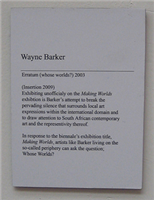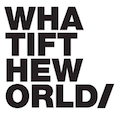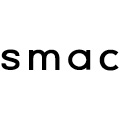Listings
'Imaginary Fact: Contemporary South African Art and the Archive'
Sue Williamson, Wim Botha, Athi Patra Ruga, David Koloane, Donna Kukama, James Webb, Penny Siopis, Andrew Putter, Joanne Bloch and Others at Venice, ItalyArt influences and reflects its world around us and, as the world changes, so too does its forms. In South Africa, during its turbulent twentieth century, visual art focused on political resistance and became a vehicle for insurgency against human rights abuses. After the advent of democracy it shifted towards an exploration of issues of identity, with race and gender gaining prominence. Today, contemporary South Africa is witness to a further significant movement – a renewed and invigorating focus on how and why histories continue to impact on the world today. To do this, contemporary artists are turning to the archive as the repository of these histories. This essay outlines the concept behind 'Imaginary Fact: Contemporary South African Art and the Archive', an exhibition that draws on South Africa’s key practitioners who, in very different and vibrant ways, draw on the archived record in order to make sense of our worlds today.
What is it about the record that artists find so enticing? At the simplest level, it is the rare combination of memory with ‘thing’ – a coming together of the tangible and the intangible – which makes the record such a powerful force. It allows the artist to construct new bridges between history and the contemporary, thus to create an architecture of meaning. The agency of archives has been demonstrated by their ability to both construct and destroy ideologies. Working with archives, in a creative way, therefore allows the artist to create work with the potential to change the course of our contemporary world.
A literary example from Italo Calvino (1998) complicates this question when he writes: ‘Perhaps the mistake lies in establishing that at the beginning I and a telephone are in a finite space such as my house would be, whereas what l must communicate is my situation with regard to numerous telephones that ring; these telephones are perhaps not calling me, have no relation to me, but the mere fact that I can be called to a telephone suffices to make it possible or at least conceivable that I may be called by all telephones.’
Calvino’s text is taken from In a network of lines that enlace, a chapter in his book titled 'If on a winter’s night a traveller'. These titles – hinting at the relation of one concept to another – seem to set the stage for a continuous tale. But each chapter is discrete – different in character and narrative to the one before and the one following. It is only when the characters in different chapters start demonstrating commonalities, or when the effect of relationships between characters in different stories can be seen, that the interplay between chapters becomes legible. A dynamic crossing is established between all players in a complex game of interrelationships.
In all case studies, artists appear to function partly as facilitator to release the potential energy stored within the seemingly latent records, and partly as activist in allowing the agency to do its work within societies. The most common methods used are translation (into new and evolving languages), interpretation (into new and evolving meanings), and mediation (from one medium to another), sometimes used individually, sometimes in combination, but often to startling effect.
Brenton Maart
01 June 2013 - 24 November 2013
Making Worlds: the 53rd Venice Biennale
Group Exhibition at Venice, ItalyThe 53rd Venice Biennale, arranged around the concept Making Worlds, happens in the latter half of 2009. Various venues around the city will be showing work from all over the world. The event will be directed by superstar writer/curator Daniel Birnbaum.
07 June 2009 - 22 November 2009














